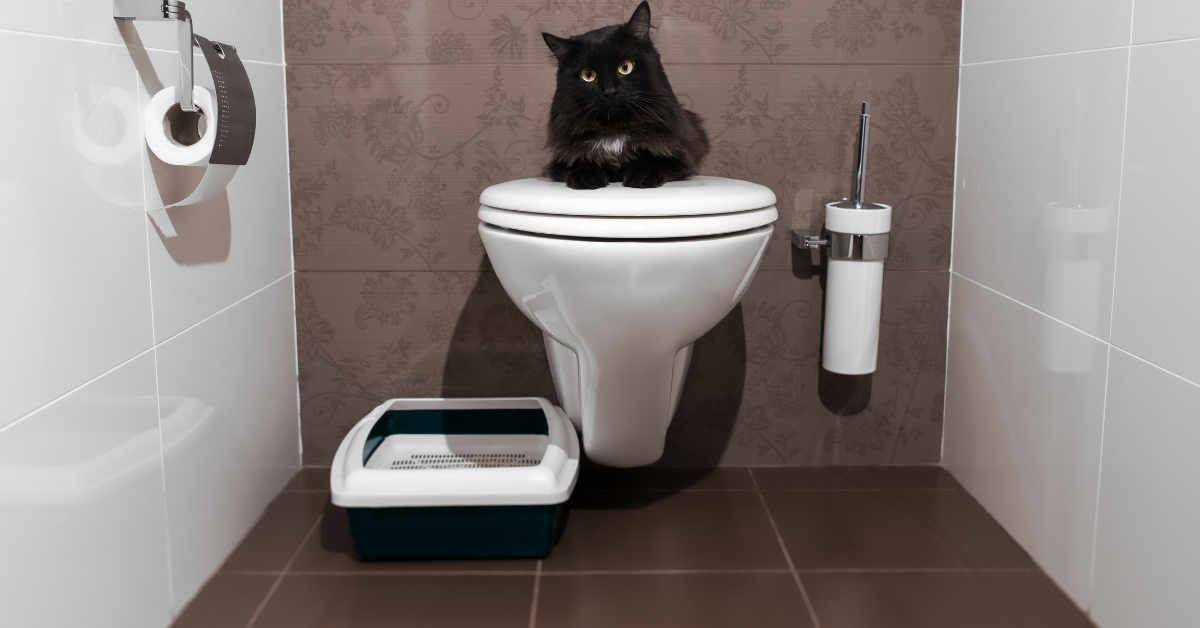We've uncovered the article involving How to Dispose of Cat Poop and Litter Without Plastic Bags listed below on the internet and decided it made good sense to talk about it with you on this site.

Intro
As cat owners, it's vital to be mindful of exactly how we get rid of our feline buddies' waste. While it might appear convenient to flush pet cat poop down the toilet, this practice can have destructive consequences for both the environment and human health and wellness.
Alternatives to Flushing
Fortunately, there are safer and more accountable methods to throw away pet cat poop. Think about the adhering to alternatives:
1. Scoop and Dispose in Trash
The most usual technique of disposing of cat poop is to scoop it right into an eco-friendly bag and throw it in the garbage. Make certain to use a committed clutter scoop and dispose of the waste promptly.
2. Usage Biodegradable Litter
Select eco-friendly pet cat litter made from materials such as corn or wheat. These clutters are eco-friendly and can be securely dealt with in the trash.
3. Hide in the Yard
If you have a lawn, consider hiding cat waste in a marked area away from vegetable yards and water sources. Make certain to dig deep sufficient to stop contamination of groundwater.
4. Set Up a Pet Waste Disposal System
Buy a pet garbage disposal system specifically made for pet cat waste. These systems use enzymes to break down the waste, minimizing smell and ecological influence.
Wellness Risks
Along with ecological worries, purging pet cat waste can additionally position health dangers to humans. Feline feces might include Toxoplasma gondii, a parasite that can cause toxoplasmosis-- a possibly serious illness, specifically for expecting women and individuals with damaged immune systems.
Environmental Impact
Purging cat poop presents harmful pathogens and parasites right into the water system, presenting a substantial risk to marine ecosystems. These impurities can adversely affect aquatic life and concession water high quality.
Final thought
Responsible pet dog ownership prolongs beyond offering food and sanctuary-- it additionally involves proper waste administration. By avoiding flushing feline poop down the toilet and opting for alternate disposal techniques, we can reduce our ecological footprint and safeguard human health and wellness.
Why Can’t I Flush Cat Poop?
It Spreads a Parasite
Cats are frequently infected with a parasite called toxoplasma gondii. The parasite causes an infection called toxoplasmosis. It is usually harmless to cats. The parasite only uses cat poop as a host for its eggs. Otherwise, the cat’s immune system usually keeps the infection at low enough levels to maintain its own health. But it does not stop the develop of eggs. These eggs are tiny and surprisingly tough. They may survive for a year before they begin to grow. But that’s the problem.
Our wastewater system is not designed to deal with toxoplasmosis eggs. Instead, most eggs will flush from your toilet into sewers and wastewater management plants. After the sewage is treated for many other harmful things in it, it is typically released into local rivers, lakes, or oceans. Here, the toxoplasmosis eggs can find new hosts, including starfish, crabs, otters, and many other wildlife. For many, this is a significant risk to their health. Toxoplasmosis can also end up infecting water sources that are important for agriculture, which means our deer, pigs, and sheep can get infected too.
Is There Risk to Humans?
There can be a risk to human life from flushing cat poop down the toilet. If you do so, the parasites from your cat’s poop can end up in shellfish, game animals, or livestock. If this meat is then served raw or undercooked, the people who eat it can get sick.
In fact, according to the CDC, 40 million people in the United States are infected with toxoplasma gondii. They get it from exposure to infected seafood, or from some kind of cat poop contamination, like drinking from a stream that is contaminated or touching anything that has come into contact with cat poop. That includes just cleaning a cat litter box.
Most people who get infected with these parasites will not develop any symptoms. However, for pregnant women or for those with compromised immune systems, the parasite can cause severe health problems.
How to Handle Cat Poop
The best way to handle cat poop is actually to clean the box more often. The eggs that the parasite sheds will not become active until one to five days after the cat poops. That means that if you clean daily, you’re much less likely to come into direct contact with infectious eggs.
That said, always dispose of cat poop in the garbage and not down the toilet. Wash your hands before and after you clean the litter box, and bring the bag of poop right outside to your garbage bins.
https://trenchlesssolutionsusa.com/why-cant-i-flush-cat-poop/

Do you enjoy reading up on Can You Flush Cat Poo or Litter Down the Toilet?? Leave a comment directly below. We'd be pleased to see your opinion about this posting. In hopes that you come back again in the near future. Are you aware of another individual who is sincerely interested in the subject? Be sure share it. Thanks so much for taking the time to read it.
Contact Us Today